Scientific name Anguillidae | Higher classification Anguilloidei Subclass Neopterygii | |
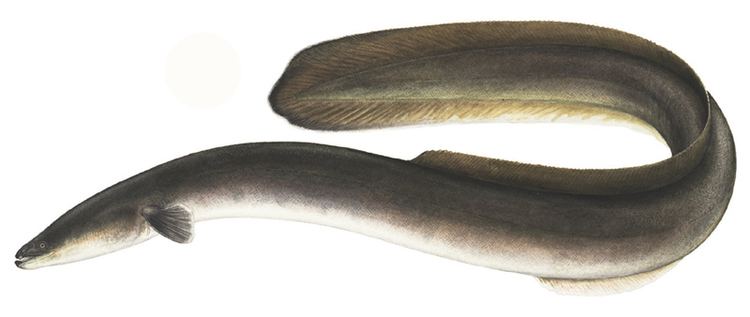 | ||
Family AnguillidaeRafinesque, 1810 Genus AnguillaGarsault, 1764 Lower classifications | ||
The Anguillidae are a family of ray-finned fish that contains the freshwater eels. The nineteen species and six subspecies in this family are all in the genus Anguilla. They are elongated fish with snake-like bodies, their long dorsal, caudal and anal fins forming a continuous fringe. They are catadromous fish, spending their adult lives in fresh water but migrating to the ocean to spawn. Eels are an important food fish and some species are now farm-raised but not bred in captivity. Many populations in the wild are now threatened and Seafood Watch recommend consumers avoid eating anguillid eels.
Contents
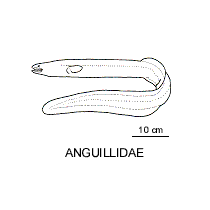
European eel anguilla anguilla moving from puddle into creek
Characteristics
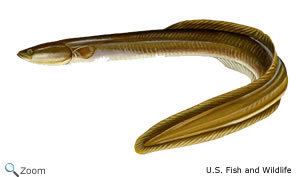
Members of this family are catadromous, meaning they spend their lives in freshwater rivers, lakes, or estuaries, and return to the ocean to spawn. The young eel larvae, called leptocephali, live only in the ocean and consume small particles called marine snow. They grow larger in size, and in their next growth stage, they are called glass eels. At this stage, they enter estuaries, and when they become pigmented, they are known as elvers. Elvers travel upstream in freshwater rivers, where they grow to adulthood. Some details of eel reproduction are as yet unknown, and the discovery of the spawning area of the American and European eels in the Sargasso Sea is one of the more famous anecdotes in the history of ichthyology. The spawning areas of some other anguillid eels, such as the Japanese eel, and the giant mottled eel, were also discovered recently in the western North Pacific Ocean.
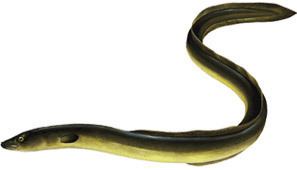
Freshwater eels are elongated with tubelike, snake-shaped bodies. They have large, pointed heads and their dorsal fins are usually continuous with their caudal and anal fins, to form a fringe lining the posterior end of their bodies. They have small pectoral fins to help them navigate along river bottoms. Their scales are thin and soft. Freshwater eels go through physical changes in their bodies when going to and from the ocean for different stages of life.
Uses
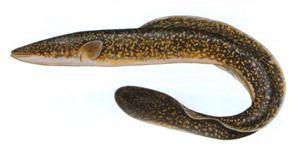
Anguillid eels are important food fish. Eel aquaculture is a fast-growing industry. Important food eel species include longfin eel, Australian long-finned eel, short-finned eel, and Japanese eel. Most eel production historically has been in Japan, Korea, and Taiwan, but in recent years, the greatest production has been in China.
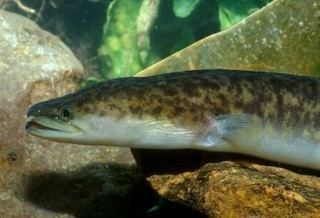
Seafood Watch, one of the most well-known sustainable seafood advisory lists, recommends consumers avoid eating anguillid eels due to significant pressures on worldwide populations. Several species used as unagi have seen their population sizes greatly reduced in the past half century. Catches of the European eel, for example, have declined about 80% since the 1960s. Although about 90% of freshwater eels consumed in the US are farm-raised, they are not bred in captivity. Instead, young eels are collected from the wild and then raised in various enclosures. In addition to wild eel populations being reduced by this process, eels are often farmed in open net pens which allow parasites, waste products, and diseases to flow directly back into wild eel habitat, further threatening wild populations. Freshwater eels are carnivores and as such are fed other wild-caught fish, adding another element of unsustainability to current eel-farming practices.
